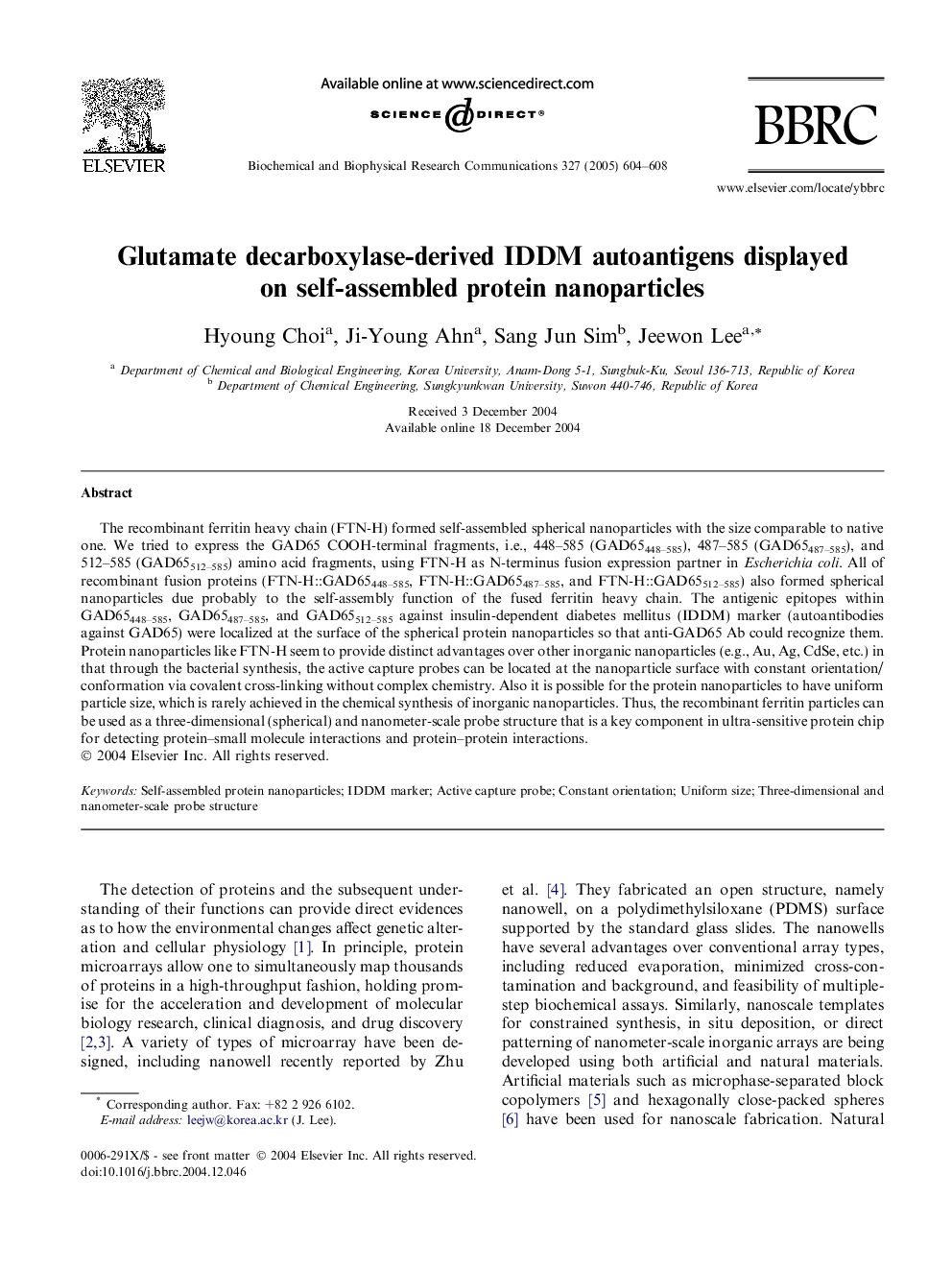| Article ID | Journal | Published Year | Pages | File Type |
|---|---|---|---|---|
| 10771945 | Biochemical and Biophysical Research Communications | 2005 | 5 Pages |
Abstract
The recombinant ferritin heavy chain (FTN-H) formed self-assembled spherical nanoparticles with the size comparable to native one. We tried to express the GAD65 COOH-terminal fragments, i.e., 448-585 (GAD65448-585), 487-585 (GAD65487-585), and 512-585 (GAD65512-585) amino acid fragments, using FTN-H as N-terminus fusion expression partner in Escherichia coli. All of recombinant fusion proteins (FTN-H::GAD65448-585, FTN-H::GAD65487-585, and FTN-H::GAD65512-585) also formed spherical nanoparticles due probably to the self-assembly function of the fused ferritin heavy chain. The antigenic epitopes within GAD65448-585, GAD65487-585, and GAD65512-585 against insulin-dependent diabetes mellitus (IDDM) marker (autoantibodies against GAD65) were localized at the surface of the spherical protein nanoparticles so that anti-GAD65 Ab could recognize them. Protein nanoparticles like FTN-H seem to provide distinct advantages over other inorganic nanoparticles (e.g., Au, Ag, CdSe, etc.) in that through the bacterial synthesis, the active capture probes can be located at the nanoparticle surface with constant orientation/conformation via covalent cross-linking without complex chemistry. Also it is possible for the protein nanoparticles to have uniform particle size, which is rarely achieved in the chemical synthesis of inorganic nanoparticles. Thus, the recombinant ferritin particles can be used as a three-dimensional (spherical) and nanometer-scale probe structure that is a key component in ultra-sensitive protein chip for detecting protein-small molecule interactions and protein-protein interactions.
Keywords
Related Topics
Life Sciences
Biochemistry, Genetics and Molecular Biology
Biochemistry
Authors
Hyoung Choi, Ji-Young Ahn, Sang Jun Sim, Jeewon Lee,
